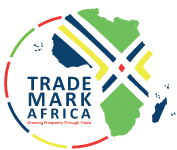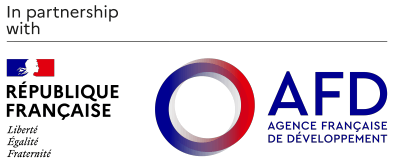Trade Logistic Clusters
Despite promising developments in the region, East African industrialization remains elusive. The region continues to be heavily import-reliant, importing four to five times than it exports, whilst regional trade remains low. Whilst much progress has been made with TMA support in driving down time and costs of trade in the region and lowering import costs, there has been a muted production response at firm level while export profiles are dominated by primary commodities with few signs of value addition. Unemployment is persistently high across the region, particularly amongst youth.
One of the key innovations pursued by TMA under its new strategy 2, is to pilot Trade and Logistics Clusters (TLCs) in each country in the EAC as a way to support growth and job creation. Initial feasibility work combined with analysis through a World Bank geo-spatial model indicate that there are certain areas in the EAC which, based on their natural endowments, demographics and favorable locations have a comparative advantage to create jobs and growth. However, certain binding constraints must be addressed such as low productivity, weak infrastructure, high energy costs, poor access to markets, policy instability, non-harmonized regulations, and lack of value addition.
The primary objective therefore of TLCs is to support unlock constraints to value addition in export-oriented sectors that have high growth potential for manufacturing and labour absorption. TMA plans to ‘jump start’ growth in these pilot regions through a co-ordinated partnership approach with government and the private sector in tackling the constraints. The approach is demand-led and aligned with government industrialization and export development strategies. Attracting investments in value-adding manufacturing will open-up new market opportunities for local producers and drive the upgrading of key value chains. Demand-led transformation of the regional economy depends on core domestic and inward investments that create market opportunity for local suppliers.
Examples of catalytic investments in Growth Clusters
| Catalytic investment | Description | TMA Portfolio |
| Industrial park | An area zoned and dedicated to industrial development, facilitating economies of scale in investments in power, water, waste management and other infrastructure. Industrial parks are generally located close to transport facilities, especially where more than one transport modes coincide, including highways, railways, airports and ports. Industrial parks can promote economies of agglomeration where tenant firms benefit from proximity to upstream input suppliers and down stream customers, share information on markets and technology, share facilities such as training programmes. |
|
| Agro Park | A cluster of businesses engaged in agro-processing and food manufacturing with access to a high potential agricultural production zone and consumer markets. Tenants could include processors of fruit juice, dried fruits, fish, meat, cashew and macademia nuts, coconut, milk and cheese and horticulture as well as manufacturers of sauces, flavourings, confectionery, soups, drinks.
Tenants also include the providers of essential ancillary services including transport and logistics services, laboratory services, standards and certification, packaging, cold storage |
|
| Logistics Facility | A trade and logistics facility comprises a series of cold and hard storage infrastructure, grading and sorting centres and packing sheds, located together with ancillary services including transport services, testing and certification, with strong connectivity to a series of designated product supply chains. The purpose of the facility is to support amalgamation, maintenance of product quality, and to provide for grading and certification in line with the needs of domestic and international markets. The trade and logistics facility is embedded into the supply chain with upstream and downstream provision of logistics and cold chain facilities |
|
| Shipyard | High potential locations disconnected from markets by lack of marine transport |
|
| Cross border market | A facility for efficiently connecting buyers and sellers in a location with significant opportunities for trade. Cross Border Market facilities include weighbridges, sorting and packing sheds, cold and dry storage for aggregation and quality maintenance, and transport and logistics services. They may also include wholesale markets and dedicated space for the establishment of processing and manufacturing activities |
|














